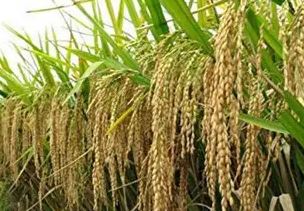Bhubaneswar: The plight of a large number of farmers in Odisha is miserable due to a delayed monsoon and poor rainfall in June and in July, which leads to a 20 per cent decline in paddy cultivation across the state, according to official data.
Transplanting and broadcasting of paddy is going on along with raising of nurseries in around 16 lakh hectares of land during the current Kharif season against 20 lakh hectares by August 1 last year, according to a senior official in the Directorate of Agriculture and Food Production,
“The deviation is 20 per cent,” he said Wednesday.
However, the official said that the state during the entire Kharif season of 2021 had witnessed paddy cultivation in over 35 lakh hectares of land.
“We have two more months in the Kharif season and the target is likely to be achieved if good rainfall occurs in August,” he said.
Admitting that scanty rainfall in June adversely affected paddy cultivation in parts of the state, the official said that the situation has slightly improved in July and if IMD’s prediction of good rainfall for August comes true, the paddy cultivation will survive.
The state experienced 26 per cent excess rainfall in May while it received 43 per cent less rain in June. The actual rainfall in June was 98.6 mm this time against the average normal of 173.2 mm.
However, the situation improved slightly in July, the Meteorological Centre here said.
“Seasonal cumulative rainfall realized between June 1 to August 3 is 522.9 mm against its normal value of 586.3 mm,” the Met Centre said.
During the period, only two districts (Boudh and Kandhamal) received excess rainfall while seven districts (Bhadrak, Mayurbhanj, Sundergarh, Sambalpur, Jharsuguda, Bolangir and Kalahandi) recorded deficient rainfall.
The highest deficiency of rainfall was recorded in tribal-dominated Sundergarh district at minus 42 per cent followed by Sambalpur (-32 per cent), Bhadrak and Jharsuguda (-23 per cent each), Bolangir (-22 per cent) and Kalahandi (-21 per cent) till August 3, the met office said.
“The remaining 21 districts have received normal rainfall and paddy cultivation activities are going on smoothly there,” the official said.
However, the ground realities appear to be different as, farmers said, transplantation of paddy saplings has been affected due to inadequate rainfall.
“Though the paddy saplings are ready, we are unable to transplant them due to lack of water in agricultural fields,” said Susant Samal, a farmer in the Patkura area in Kendrapara district.
Even as Kendrapara recorded only minus 9 per cent deficient rainfall, the farmers face difficulties as traditional irrigation channels are blocked and there is no water in canals, farmers said.
Similar is the fate of farmers in almost all the coastal districts and also in Sundergarh, Sambalpur and Mayurbhanj.
As cultivation is mostly dependent on rainwater due to a lack of irrigation facilities, farmers have this time a tough time meeting the target.
“Above 70 per cent of agricultural fields in Odisha do not have irrigation facilities for which the farmers depend on rainwater,” said Akshya Kumar, the state convenor of Nabanirman Krushak Sangathan, an organisation of peasants.
However, the IMD in its recent forecast said that many parts of Odisha will receive good rainfall from August 5 onwards.
According to agriculture scientist Sandip Patnaik, Odisha for some years has been witnessing a different climate as most of the rain comes in the month of September and October instead of the normal monsoon months of July and August.
He blamed it on climate change and said that the monsoon appeared to have been shifted two months in advance.
However, late rain is not useful for the cultivation of paddy, he said.
PTI







































